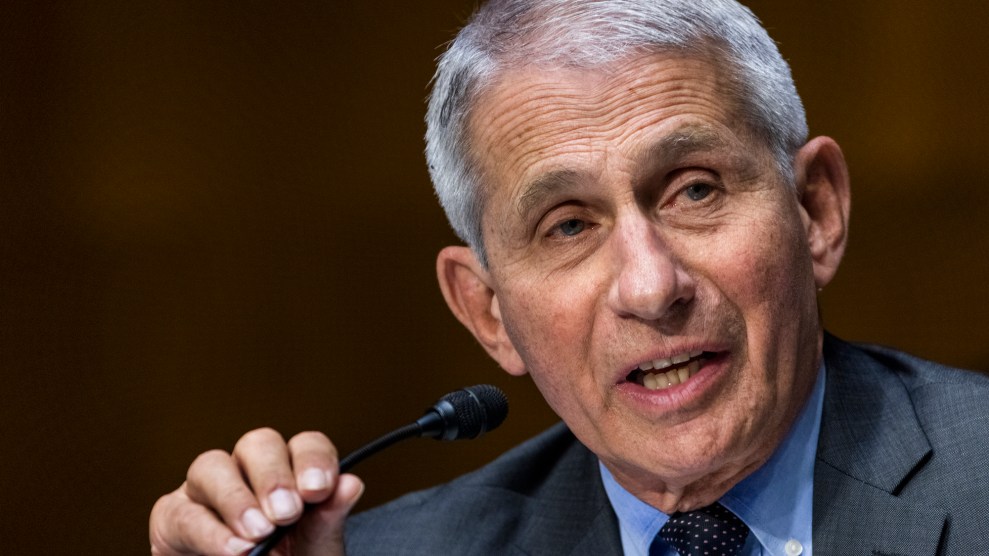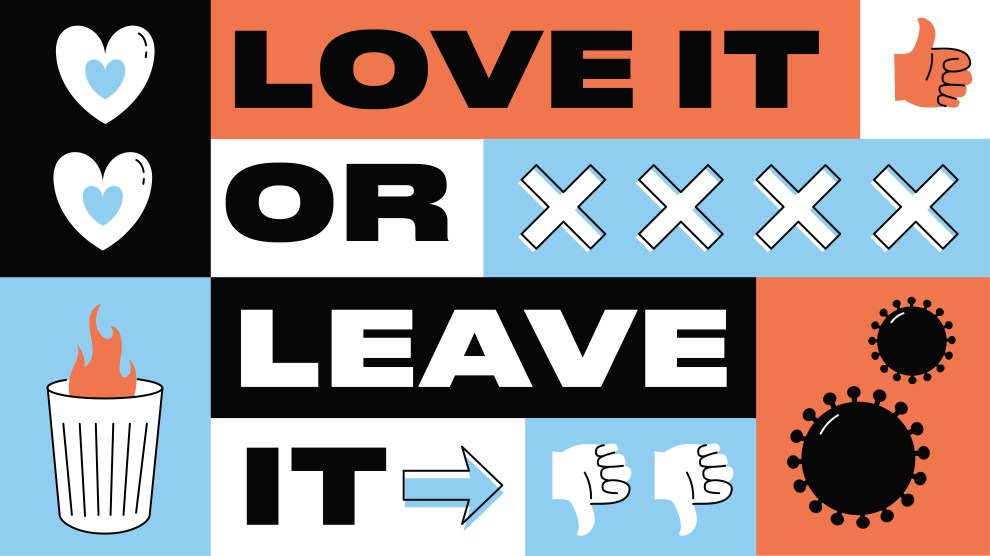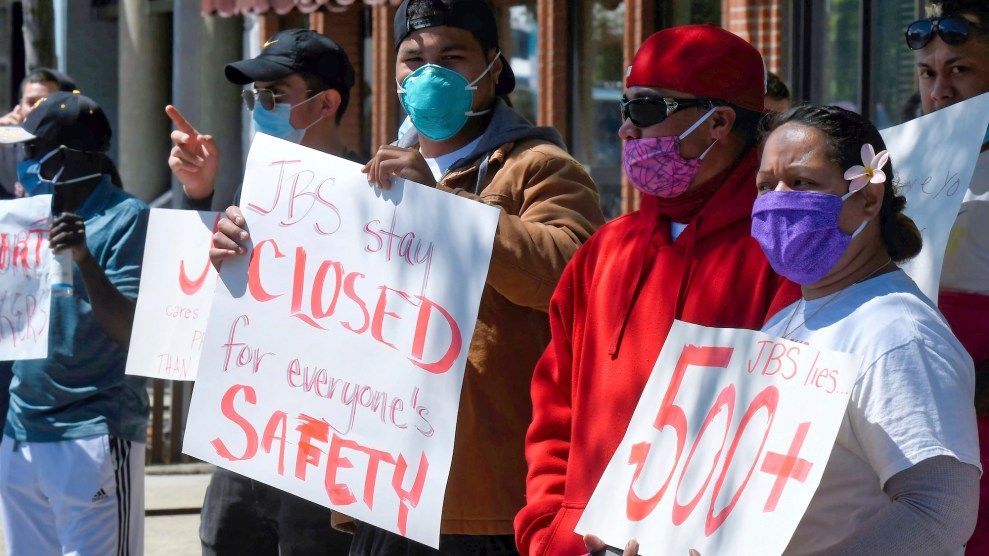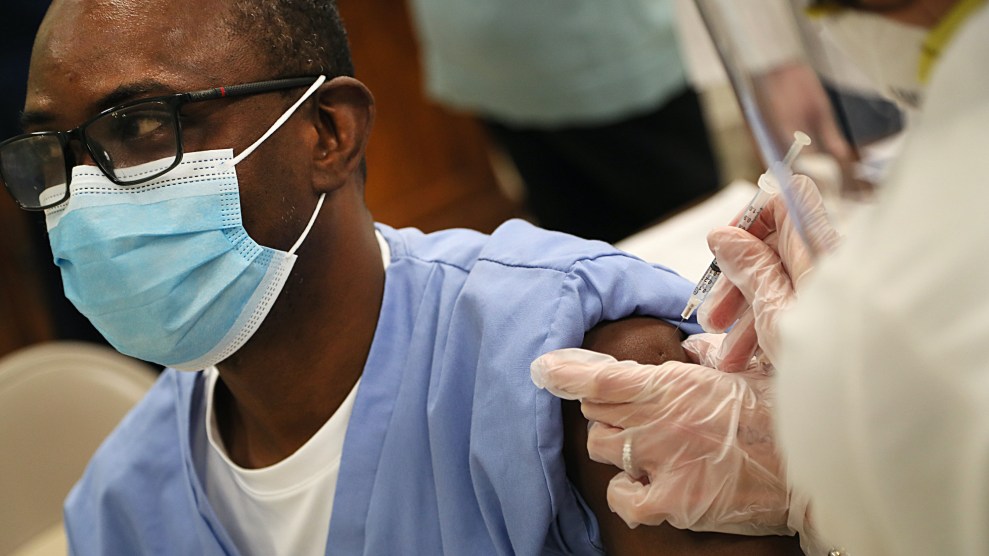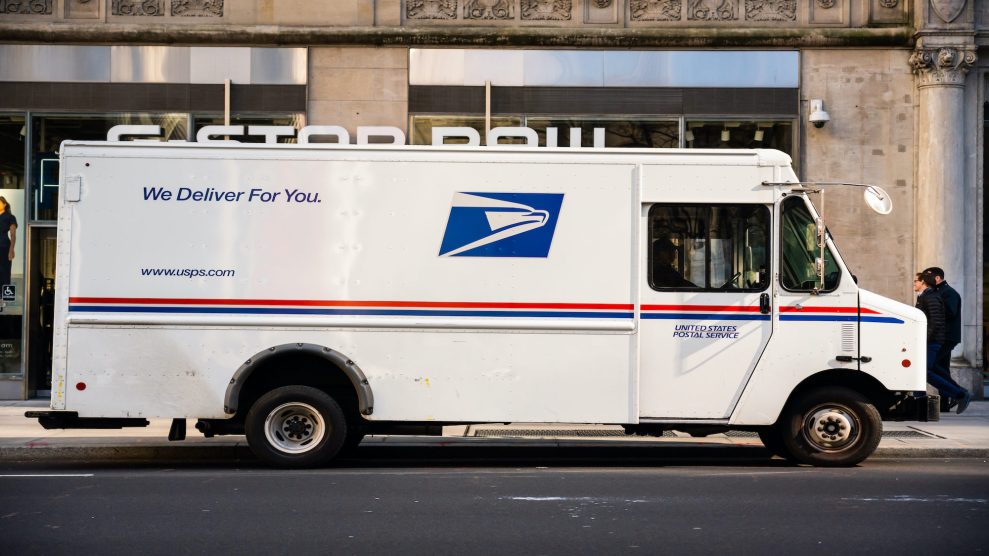
Alex Tai/ SOPA Images/ Zuma
This story was originally published by ProPublica, a Pulitzer Prize-winning investigative newsroom. Sign up for The Big Story newsletter to receive stories like this one in your inbox.
Last November, just as Minnesota was suffering through a punishing wave of COVID-19, managers at a St. Paul U.S. Postal Service distribution center allowed employees to hold a going-away party in the building.
Alejandra Hernandez, a mail handler at that center, was shocked when she saw the gathering: Almost everything about it seemed to violate pandemic safety policies. More than 15 of her colleagues were together in a break room meant for six, chatting, eating and not wearing masks.
That day, she filed her second of three complaints to the Occupational Safety and Health Administration. “I hoped that someone would come and make them take this seriously,” Hernandez recalled.
She wasn’t the only one complaining about problems at the facility — another employee had filed a complaint in July, alleging that workers weren’t being alerted of potential exposures and the building didn’t have proper ventilation. Others filed three more complaints in September alleging that the site’s sanitation practices, personal protective equipment and quarantine measures were insufficient.
The limited response to Hernandez and her colleagues’ appeals for help provides a window into the failures of the Postal Service, one of the country’s largest employers, and OSHA, which is supposed to protect workers, in responding to the pandemic. Approximately 55,600 postal workers have tested positive for COVID-19 nationwide, and at least 197 have died.
In response to the complaints, OSHA conducted two remote inspections, done via phone calls and emails. It found “incidental deficiencies” that did not merit any fines or corrective action. Its report mentioned in passing a problem that was far from incidental for Hernandez and others: Managers weren’t always notifying workers about possible exposure.
According to the USPS’ official count, about 200 of the St. Paul facility’s 1,500 employees have fallen sick with COVID-19. But state health department records obtained by ProPublica show that the Postal Service often missed or didn’t disclose cases. The state tracked clusters of cases linked to the St. Paul building, many of which do not show up in the USPS’s count.
Hernandez herself became one of those cases in March, when she got COVID-19 and spent six weeks in the hospital. She still struggles to keep her oxygen levels up, and her doctor has instructed her not to stand for more than 15 minutes at a time. She reported her illness to management, but no COVID-19 cases show up in daily case counts sent by management to union officials anytime near the day she got sick. The USPS did not respond to a question about the discrepancy.
That same month, one of Hernandez’s colleagues at the plant died from the virus. Mary Ellen Moore, 62, had worked at the St. Paul plant for 35 years. According to her family, the USPS hadn’t informed her of any possible exposures at work, and she wasn’t aware of any cases in the building. But according to state health department records, there was a cluster of at least 11 cases on her side of the building when she got sick. Only three cases appear in the USPS’ case report to unions.
In response to detailed questions from ProPublica, the Postal Service said it put comprehensive policies and practices in place at the start of the pandemic that help ensure the health and well-being of its employees. “We continue to follow the strategies and measures recommended by the Centers for Disease Control and Prevention (CDC) and public health departments,” spokesperson David Partenheimer wrote in an email.
Postal workers have routinely sought help from OSHA during the pandemic, but their complaints have had little effect. Since February of last year, USPS employees across the country have filed more than 1,000 complaints alleging COVID-19-related hazards. Following those complaints, OSHA issued citations for four violations, all of which the Postal Service has contested. The USPS hasn’t been obligated to make changes or pay penalties for any of the reported safety hazards.
Postal workers weren’t alone in seeking help that never came. OSHA has often been absent during the pandemic. The Wall Street Journal identified more than 500 COVID-19 outbreaks in workplaces where workers had already warned OSHA of unsafe conditions.
A report earlier this year by the Department of Labor’s inspector general criticized OSHA’s handling of complaints during the pandemic. The watchdog specifically flagged concerns about remote inspections — the kind the government did at the St. Paul distribution center — in which problems “may go unidentified and unabated longer, with employees being more vulnerable to hazardous risk exposure.”
OSHA is still investigating possible COVID-19 safety lapses at the USPS in 20 open cases, an agency spokesperson said, and it’s possible that it will identify more violations. OSHA has also updated its pandemic enforcement plan to prioritize in-person inspections. “Our goal is to investigate every complaint we receive thoroughly, and our updated enforcement approach better ensures that we are doing that,” the agency said.
Hernandez had access to protections and privileges that many U.S. workers don’t: She’s a union member, a citizen and a federal employee with access to paid sick leave, and she knows she has a legal right to a safe workplace. She and other colleagues used all the channels available to them.
But by the time she got sick, she said, she had stopped trying.
“The more I kept fighting it, the more it felt like I was just beating a brick wall,” Hernandez said.
In high school, Hernandez was suspended for getting in the middle of fights, trying to help other kids who got picked on. “I’m not going to sit there and watch kids get beat up,” she said. Now she’s 35, with three kids, and she still can’t sit back and not say anything.
Hernandez clung to the pandemic guidelines developed by the CDC. They were the closest thing she had to instructions on how to survive a pandemic while working alongside 1,500 colleagues. She was especially afraid that she might take the illness home — her sister had just had open heart surgery, her other sister has asthma, her mother is diabetic.
On March 19, while she was still waiting to hear back from OSHA about her November and December complaints, she took her son to the doctor for an ear infection. The nurse noticed red patches on his skin that Hernandez thought were an eczema flare-up, but that can actually be a symptom of COVID-19 in children. Hernandez felt like she had a cold. The county health department called the next day — both she and her son had tested positive. She doesn’t know how she contracted the virus, but said that, besides her children, no one she spent time with outside of work tested positive.
Hernandez called in sick. That weekend, she started hallucinating, a symptom of her fever and lowered oxygen levels. She has no memories of the next few days, but her kids say she was trying to talk to people who weren’t actually there. Soon, she was rushed to the hospital in an ambulance. She woke up in diapers, hooked up to an oxygen machine.
Though she called in to the USPS’ absence reporting line the day she got her diagnosis, her case does not appear in daily case totals that district management sends to local union leaders. As ProPublica has previously detailed, the USPS hasn’t consistently told workers when they’ve been exposed to sick colleagues, or how many cases have been reported in the buildings where they work.
Six weeks passed before Hernandez was released. While she was fighting off COVID-19, her 16-year-old daughter and extended family took over caring for Hernandez’s 1- and 4-year-old kids. By the time her doctor cleared her for release, she could barely walk half a block without losing her breath.
On May 6, days after she came home, OSHA sent her a letter. The agency was responding to the complaint she filed five months earlier, when she reported that the USPS wasn’t always following proper quarantine procedures — someone on her shift who had been sick came back to work even though they were still symptomatic. For the second time, OSHA did a remote inspection and concluded that there wasn’t a problem; the USPS had policies that lined up with CDC guidelines. OSHA didn’t do inspections following her complaints about maskless parties.
Though OSHA has issued safety guidelines pertaining to COVID-19 in the workplace, the recommendations don’t have the force of law. President Joe Biden promised to issue an emergency standard that would give OSHA more power to enforce COVID-19-specific measures. When the standard came into effect in June, it applied only to health care workers, leaving out other hard-hit industries.
When Hernandez came back to work in late May, her colleagues didn’t know she’d been sick. Rumors had spread that she’d gone on maternity leave. “They actually asked me if I had a baby,” Hernandez said. When she first reported her illness to the USPS, she named five colleagues she’d had contact with to the agency nurse, so that they could be notified and quarantined. When she later checked with her colleagues, the USPS had only contacted and quarantined one of them, she said. (The USPS said it would not comment on individual cases.)
As ProPublica and the USPS inspector general later detailed, the USPS doesn’t have enough health care staff to identify and quarantine every exposed worker. The inspector general also reported that the agency had no strategy to fill those roles. At the time, 21% of the USPS’ nurse positions were vacant. The nurses are responsible for interviewing sick workers, doing contact tracing to identify exposed workers and clearing people to come back to work.
On the other side of the building from Hernandez’s work area, Moore, a mail clerk, had started feeling sick in early February, a few weeks before Hernandez. Moore told her family she thought it was just the sinus infection and allergies she usually got around this time of yearBut a few days later when she visited her doctor, her breathing was so labored that the doctor had her sent to the hospital in an ambulance.
At first, it didn’t seem like she would be there for long. She and her family stayed in touch with video calls and texts. When her grandson won student of the month for his grades, she celebrated with him over the phone. But her condition worsened. On Feb. 19, she was transferred to the intensive care unit and put on a ventilator soon afterward.
As the days went by, Moore used up her sick leave, then her vacation days. After those ran out, she had to take leave without pay. Once Moore could no longer speak, her older daughter took over calling her USPS supervisor to tell her how to allocate Moore’s leave.
“My mom literally, up until she could no longer talk, was texting her supervisor, making sure how to do her time,” said Vanessa Vasquez, Moore’s daughter. “She was so worried about me talking to her supervisor, and how to divide her annual and sick leave and no pay.”
On March 12, Moore’s lungs collapsed. While she was on the ventilator, her two daughters, her grandchildren and her partner of 30 years visited to say goodbye.
“We were best friends,” Vasquez said. “We were only 20 years apart. Everybody had different bonds with her.” In an interview over Zoom, Vasquez’s 12-year-old son Tony sat with his head in his hands. “She was everything,” he said, before his voice broke.
The family tried hard to limit their exposure to COVID-19, avoiding grocery store visits and contact with anyone outside of the family. They were worried about infecting Moore’s 87-year-old mother. No one in the family tested positive other than Moore’s partner, who didn’t show symptoms. He works for a PPE engineering company and said his employers always sent alerts when there were COVID-19 cases among workers. There hadn’t been any alerts recently.
“I think that if they would’ve told her she’d been exposed, she would’ve gotten tested and maybe her outcome would’ve been different,” her daughter said. “We don’t know that, and we’ll never know that.“
